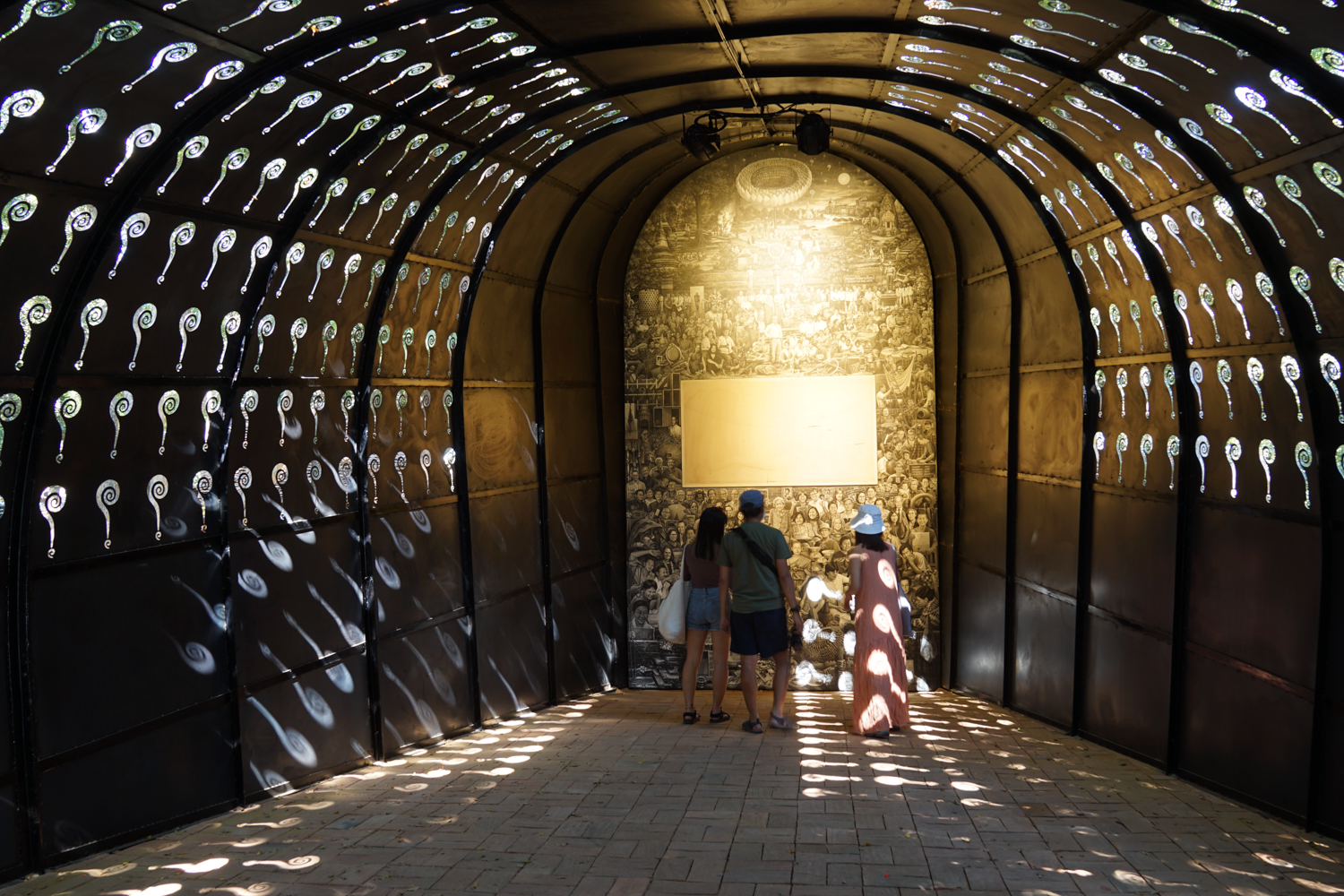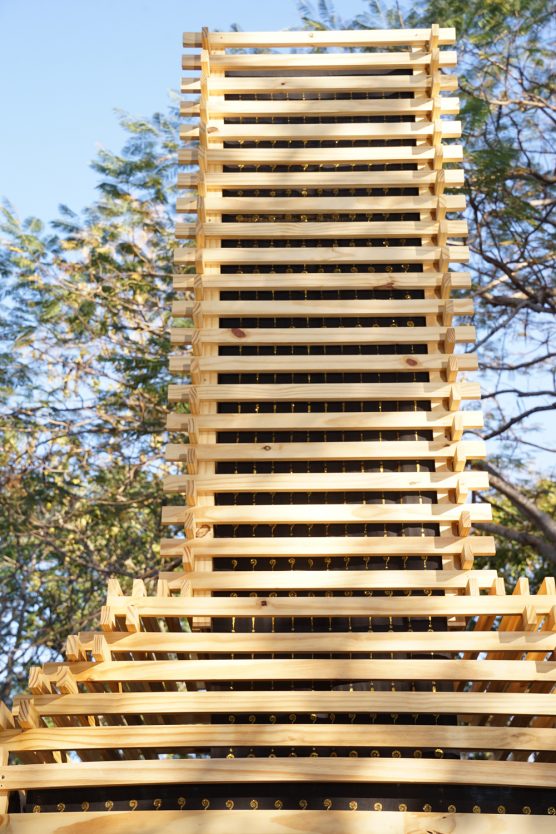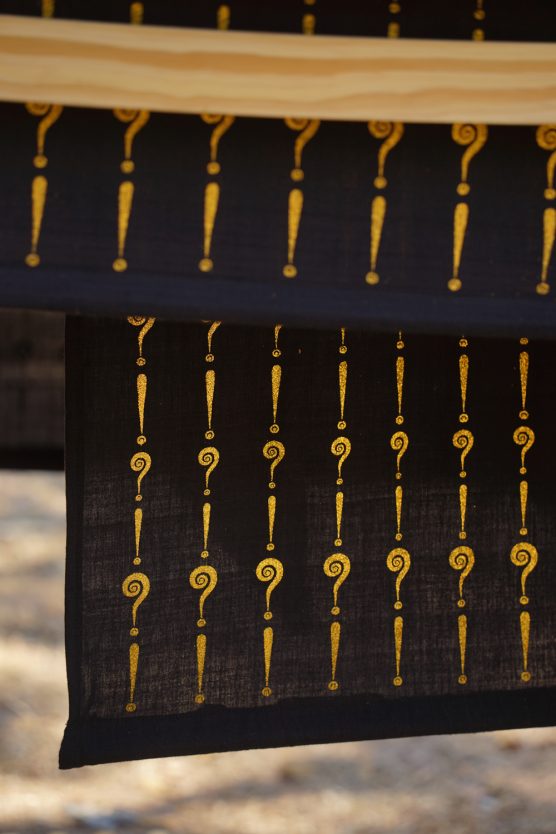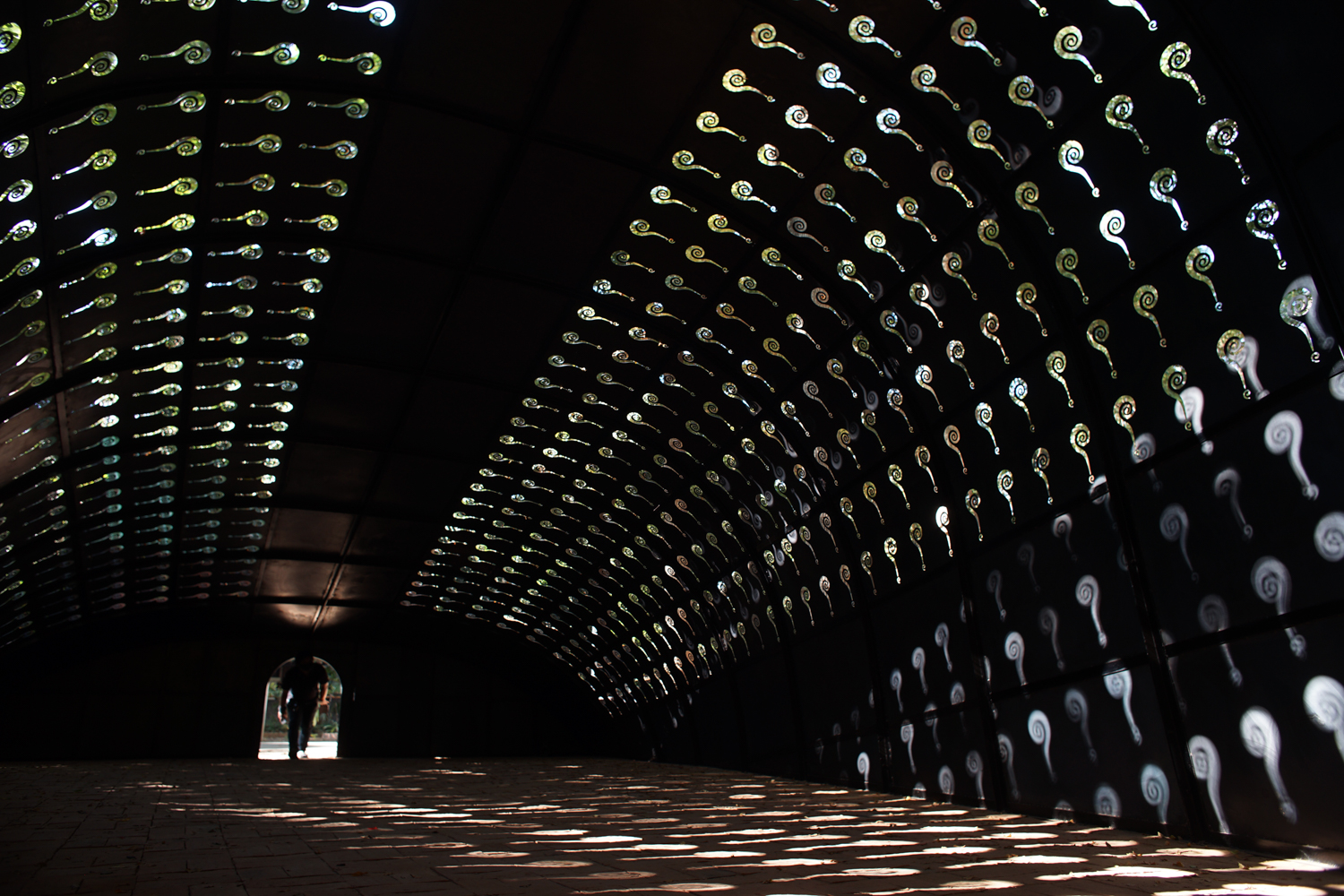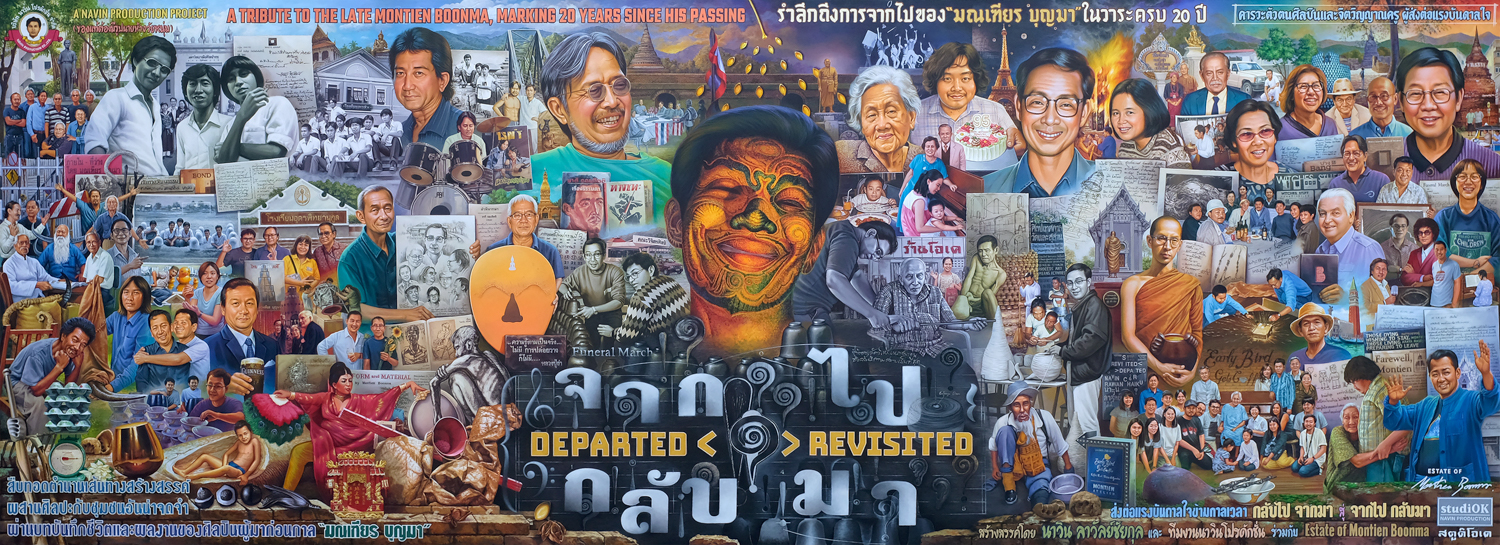A TRIBUTE TO THE LATE MONTIEN BOONMA, MARKING 20 YEARS SINCE HIS PASSING
CONCEIVED & DIRECTED BY NAVIN RAWANCHAIKUL
IN ASSOCIATION WITH THE ESTATE OF MONTIEN BOONMA
TEXT: TUNYAPORN HONGTONG
PHOTO COURTESY OF NAVIN PRODUCTION
(For Thai, press here)
The last weekend of 2020, which recently passed were the two days where we felt as if Montien Boonma paid us a visit from his death. His presence has never been this vivid in our memories for quite some time.
This ‘return’ after his two-decade ‘departure’ comes in the shape and form of ‘Departed < > Revisited,’ the exhibition that Navin Rawanchaikul has put together in the memory of Montien Boonma’s twenty-year passing. Navin chose Wat Umong Suan Buddha Dhamma, a 700-year-old Buddhist temple in Chiang Mai, Thailand, to be the site where the exhibition and the majority of activities were to be held. This secluded, peaceful forest monastery was the place Montien spent most of his time learning and healing. The temple was also one of the designated sites of the 1993’s Chiang Mai Social Installation Art Festival, where Montien installed his ‘Vipassana-Vessel’ piece on the temple’s outdoor ground.
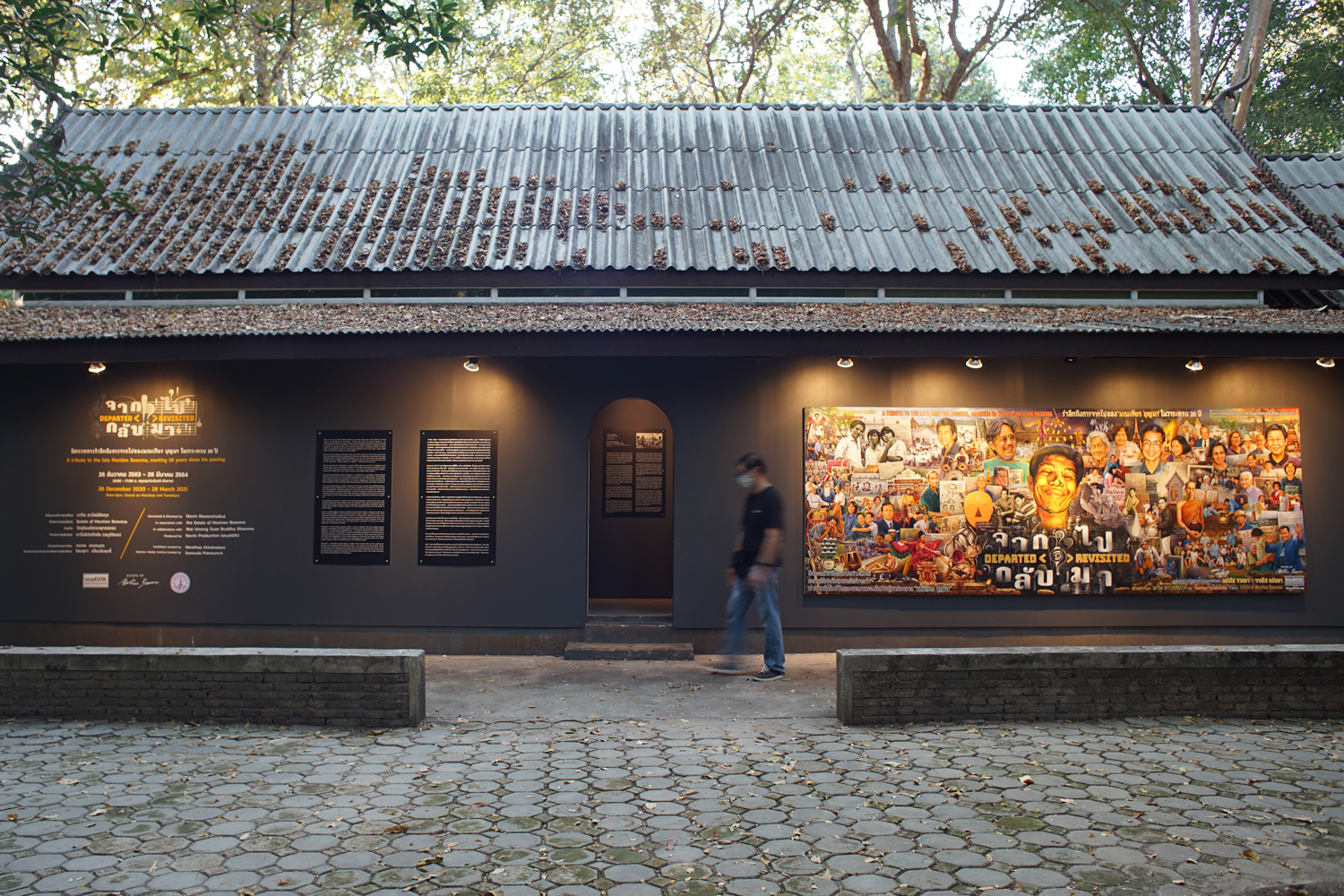
In ‘Departed < > Revisited,’ Navin and the Navin Production Team, along with friends who wished to be a part of the remembrance of Montien. Among them was Tawatchai Puntusawasdi, the artist and close assistant of the late artist. As a collective effort, they recreated two of Montien’s works. The first work, ‘Room’ (1994), is an installation comprised of seven sculptures, each made of pinewood and constructed into different airy structures. Installed in an enclosed perimeter on the temple’s public ground, viewers can stand inside the structure cluster and experience the space that reminisces the seclusion of pilgrimage monks who use their temporary shelters to shield themselves from the outside world. Montien’s first showcase of the piece took place in 1994 at Adelaide Installations: Beyond the Material World, organized as a part of the Adelaide Festival. However, the exhibition took place when Montien’s wife was in a critical stage of her illness, resulting in Montien having to assign Navin to Adelaide to supervise the installation.

Montien Boonma, Room, 1994 (Reconstructed 2020)
‘Room’ was dismantled after the exhibition was over. Navin later discovered that he had kept a piece of fabric with the ‘?’ and the gold ‘!’ pattern used as apart of the piece’s installation. In 2015, Navin used the material in ‘Gate of Fear’ and the Revisited < > Departed (2019) exhibition, which told the stories that revolved around Montien and Navin’s family’s love and connection. The question marks and exclamation marks reappeared in ‘Page 42: Very Beautiful’ (2019). Montien started to paint the two symbols while he was taking care of his ailing wife. The question marks were used to express his doubts in life, whereas the exclamation marks connoted as human reactions towards the unfolded reality. ‘Room’ was one of the first works in which Montien used the two symbols.
‘Vipassana-Vessel’ (1993) is another piece that Navin recreated. Taking viewers back in time to the 1993 Chiang Mai Social Installation, Navin installed the reproduced work at the same spot it was first placed 27 years ago. In the middle of Wat Umong Temple’s outdoor ground, over 600 pieces of ceramic bowls were meticulously arranged into a 24-level high structure. Several chopsticks were molded into the shape of a human hand’s skeleton, which were then placed around the surrounding rows of trees, precisely mimicking Montien’s original installation. Navin and his team traveled to Muang Kung Pottery Village and had the local artisans reproduce the ceramic bowls that would look exactly like the ones Montien made. The only thing missing was the original creator of the work himself, who, 27 years ago, was sweeping dried fallen trees on the temple’s ground into a ripple pattern as a part of his daily routine, as he tried to calm his mind.

Montien Boonma, Vipassana-Vessel, 1993 (Reconstructed 2020)
Recreating Montien’s art was a work of great merit, particularly for the young generation viewers who never had a chance to witness the creations of the great artist who is regarded as the pioneer of Thai Contemporary art in the international art world. Additionally, the decision to install the recreated works inside Wat Umong Temple has raised an interesting issue about art and religious place. In the two talk sessions where Buddhist monks were among the key speakers, Pramuan Pengchan gave an insightful observation about how Theravada temples should highlight and include the artistic and aesthetic aspect into the teachings more because art holds the power that allows one to express and experience an awakening without the need for verbal explanations. Montien’s artistic expression, which is something akin to meditation, is a clear example of this.
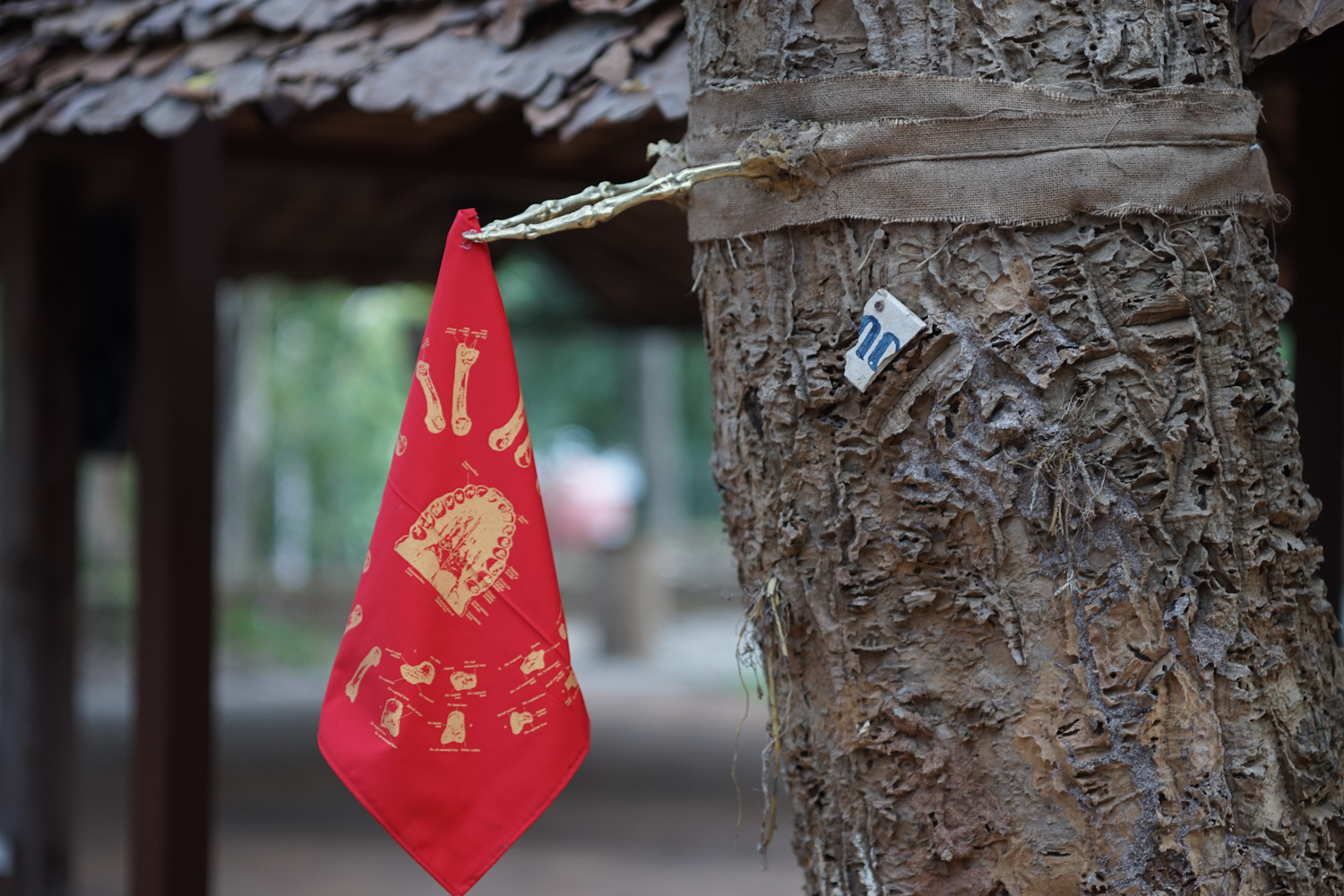
Montien Boonma, Vipassana-Vessel, 1993 (Reconstructed 2020)
While that is a viewer’s perspective, from Navin and his team’s point of view, the most interesting aspect of the work lies in the production process. They began by attempting to figure out the details of the two art pieces from photographs published in exhibition pamphlets, videos and talking to the people who saw or helped Montien install the two works in the past. During this process, Worathep Akkabootara, the curator, told us how the gathered information and details were varied in each individual’s memories and interpretations.
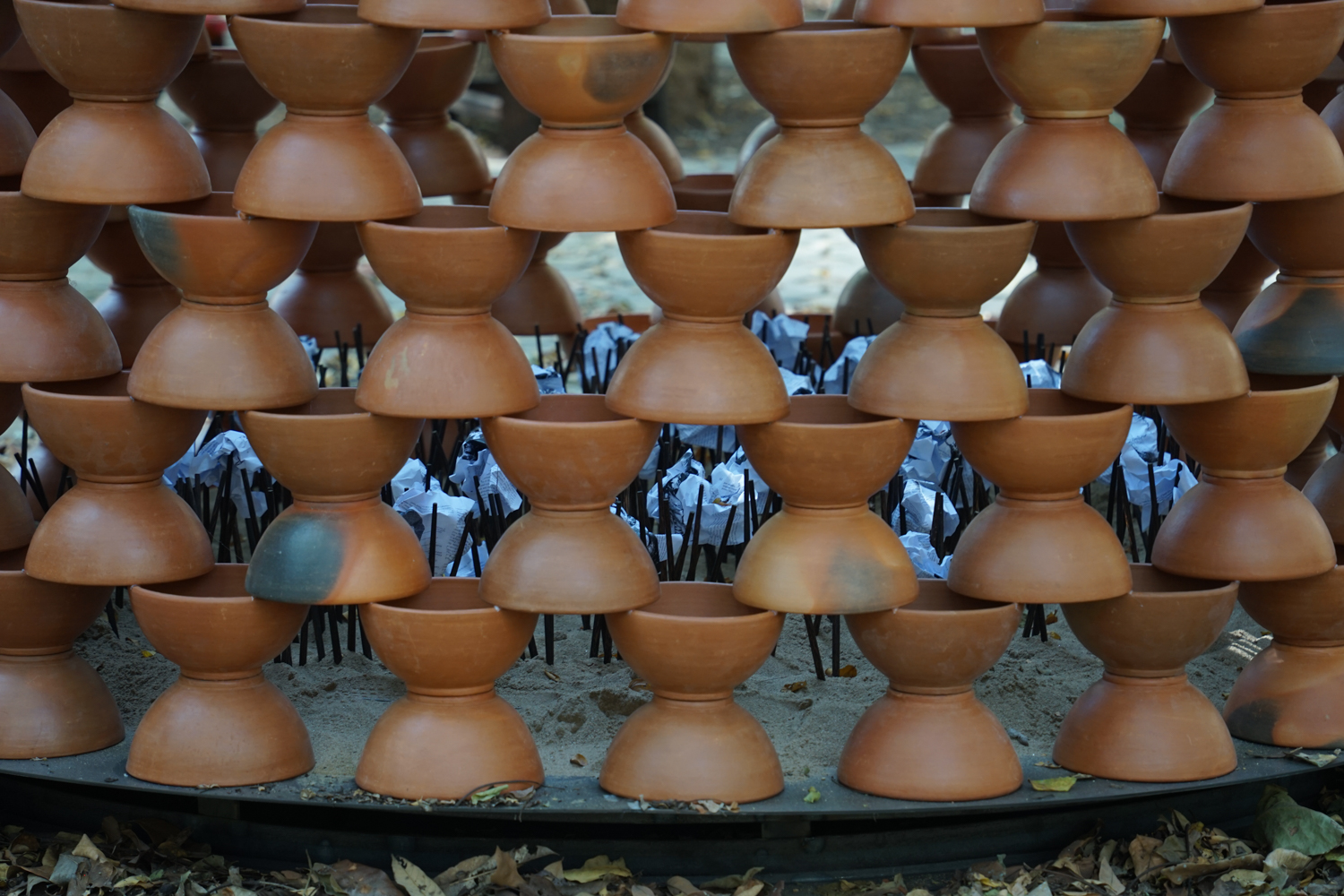
Montien Boonma, Vipassana-Vessel, 1993 (Reconstructed 2020)
Recounting the memories was a pivotal part of the exhibition’s opening activities. Many sessions invited speakers who are Montien’s friends from his school days, such as Chalermchai Kositpipat, Chart Korbjitti, and Chokchai Takpho, including those who worked with or were close to the artist, from Apinan Poshyananda, Gridthiya Gaweewong, Namthong Sae-Tang, Thatchai Hongphaeng, to Montien’s son, Choompong Boonma, to share their memories of Montien. From all the stories told throughout the entire two days of the exhibition’s opening event, it felt as if Montien paid a visit, alongside the art he had created… as the sound of a piano playing Funeral March played in the background.
The song was played for the first time as a part of ‘House of Hope’ (Homage to Montien Boonma) (2013), the work Navin created as a tribute to the late artist. When Navin visited Montien’s home in Nonthaburi, he discovered Montien’s love for the song, particularly the version his wife played with the piano they owned at their home, and his wish for the music to be played at his funeral. Navin also found out about the blank canvas Montien saved for his son installed above the piano. He had the replica of the canvas’ made and used it as a part of ‘House of Hope’ alongside the painting of the Boonma had created.
The melody of Funeral March, the empty canvas full of stories and the portraits of people in Montien’s life, were reused in ‘Black Question’ (After Montien Boonma) (2020). Navin created the piece as a homage to the artist, and it is his only work featured in ‘Departed < > Revisited.’ Nevertheless, the new painting created for ‘Black Question’ wasn’t merely stories of Montien’s family members but the people whom the artist was close to and whose memories were recounted and shared with Navin when he and his team were traveling to different places to meet them as they were putting pieces of Montien’s story together. The blank canvas used in this work displayed several visible traces of time, and it was the exact same canvas hung above the piano in Montien’s house.
Navin installed the painting and the canvas at the furthest end of the black-painted tunnel with a perforated ‘?’ and ‘!’ pattern (the tunnel replicated one of Montien’s work but in a much smaller size or approximately two-feet high). When viewers bowed their heads and walked past the tunnel (bowing is one of the characteristics found in Montien’s art, symbolizing a bow of respect), what appeared before their eyes were the entirety of the ‘?’ and ‘!’ motifs on the walls and ceiling. The outside light pierced in and illuminated some of the symbols. Looking upward, through the ceiling’s perforated mass, one would catch glimpses of green from the swaying trees. The light generated shadows, appearing in the shape of the two symbols. Some were on the floor, while some made their way onto the canvas. The light scent of the herbs coated on the tunnel’s surface gently reached their noses, and the sounds of the Funeral March song lingered as one walked towards the end of the tunnel to see the canvas painted with portraits of the people in Montien’s life.
‘Black Question’ radiated both Montien and Navin’s artistic identities. It was like the creation made by the master and his protégé with Funeral March weaving all the stories together. Navin created the work with the respect and connection he had for his teacher, and the backstory will eventually spark people’s interest in Montien’s story and works. The two days of the opening rendered a similar result to several other exhibitions that Navin has put together: the use of art to interlace people with a certain commonality, by meaningfully and fulfilling facilitating beautiful connections and interactions.
–

Montien Atelier Archive
Apart from the exhibition and activities featured in this article, ‘Departed < > Revisited’ also put together Montien Atelier Archive inside Wat Umong Temple’s Dhamma Puzzle Hall, in which Montien Atelier selected prototypes, essential drawings, documents and photographs that encapsulate Montien’s life and artistic creation when he was living Chiang Mai. A parallel exhibition, ‘Becoming Stupa,’ a collection of works by Montien Boonma selected by Gridthiya Gaweewong from DC Collection, is also being held at DC Collection.
‘Departed < > Revisited’ and ‘Becoming Stupa’ will be available until 26th March 2021. For more information, visit www.facebook.com/NavinProduction.
–
*Parts of the article’s content are sourced from the publication ‘Death Before Dying: The Return of Montien Boonma’.

